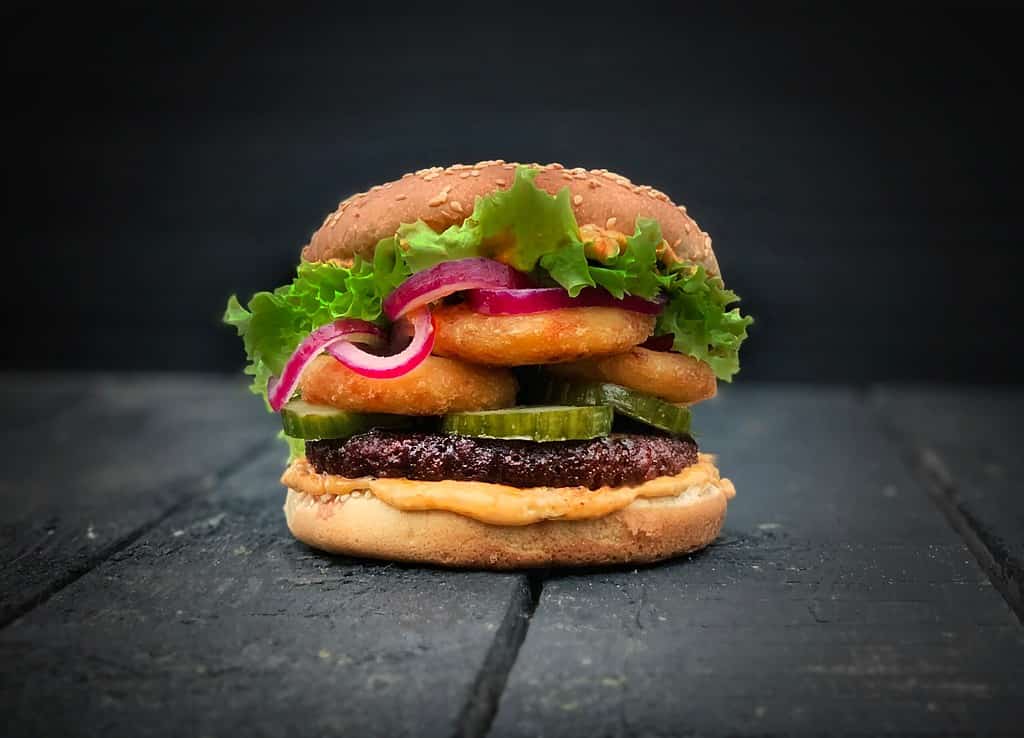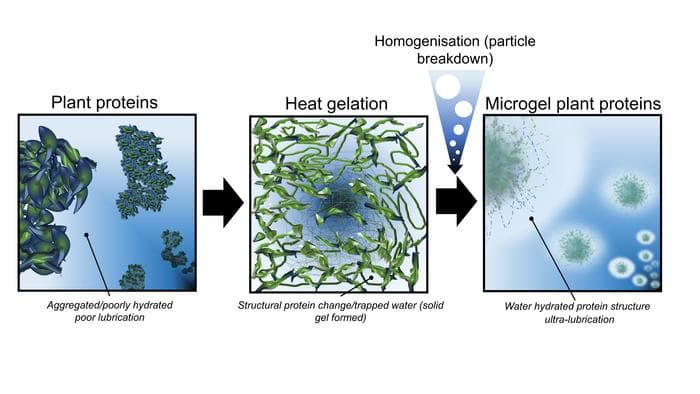
Plant protein has come a long way. The days of dry, bland, and boring plant protein are gone, and many supermarkets already feature a great variety of appealing meat replacements. But there’s still plenty of work to do — and it’s not just to the taste, it’s also in the texture.
For many people, what makes meat different from plant alternatives is the chewy, fattier texture of meat. Now, researchers have found a way to replicate that.
Less meat, less emissions
Eating less meat (and red meat in particular) is one of the most sustainable things you can do. Around a third of all our greenhouse gas emissions comes from agriculture, and a disproportionate part of that comes from meat. No matter how you look at it (in terms of protein provided, per gram, or in terms of land or water use), meat uses up a lot of resources and produces a lot of negative externalities. Add in the ethical concerns and the health problems associated with red meat and it’s not surprising that more and more people are turning towards plant alternatives.
But while some people are adamant about eating less or no meat, for some, the problem is more nuanced. More people would eat plant alternatives if they were similar (in price, taste, and nutrition) to meat. So, producing more realistic meat alternatives would encourage more people to reduce their meat consumption.
Looking to address this, a team led by Anwesha Sarkar at the University of Leeds devised a new way to process plant proteins in a way that mimics meat more closely.
They use a process called microgelation — a process that cross-links polymers into a gel by changing their molecular connections. In this case, plant proteins (which start off as dry) are placed in water and then heated in a specific way. This changes the structure and produces a gel that surrounds and encases the proteins, essentially trapping water around them and making them more juicy. Professor Sarkar said:
“What we have done is converted the dry plant protein into a hydrated one, using the plant protein to form a spider-like web that holds the water around the plant protein.”
“This gives the much-needed hydration and juicy feel in the mouth.”
“Plant-based protein microgels can be created without having to use any added chemicals or agents, using a technique that is widely available and currently used in the food industry. The key ingredient is water.”

The whole process started off not with proteins or with any plants, but rather with computers. Researchers first modelled the behavior of plant protein microgels and when they had a robust model that they were confident in, they moved to physically create the protein.
Afterward, the team visualized their result using the atomic force microscopy suite in the Faculty of Engineering and Physical Sciences at Leeds. Atomic force microscopy essentially produces pictures of what the analyzed molecules look like.
“Seeing the images from the atomic force microscope was a such as exciting moment for us. The visualisations revealed that the protein microgels were pretty much spherical and not aggregating or clumping together. We could see individually spaced plant protein microgels,” Sarkar added.
“Our theoretical studies had said this is what would happen but there is nothing quite like seeing it for real.”
The resulting protein microgels also have a high lubricity — in other words, they feel fat, like single cream. This means they can also be used in other products to make them healthier or replace meat or animal fat. Ben Kew, doctoral student in the School of Food Science and Nutrition at Leeds and lead researcher in the project, said: “This is quite a remarkable finding. It is striking that without adding a drop of fat, the microgels resemble the lubricity of a 20% fat emulsion, which we are the first to report.”
It’s a stunning testament to how complex food science can be nowadays. But it’s only fitting, given the scale and urgency of the challenges we face. The creation of realistic plant-based meat alternatives represents more than a culinary innovation. It’s a crucial step toward a more sustainable and humane global food system.
The potential applications of this technology extend beyond the dinner plate, promising healthier, more sustainable products across the food industry. As this research makes its way from the laboratory to the supermarket shelves, we may soon find ourselves at a turning point where plant-based options are no longer the alternative but the norm.






